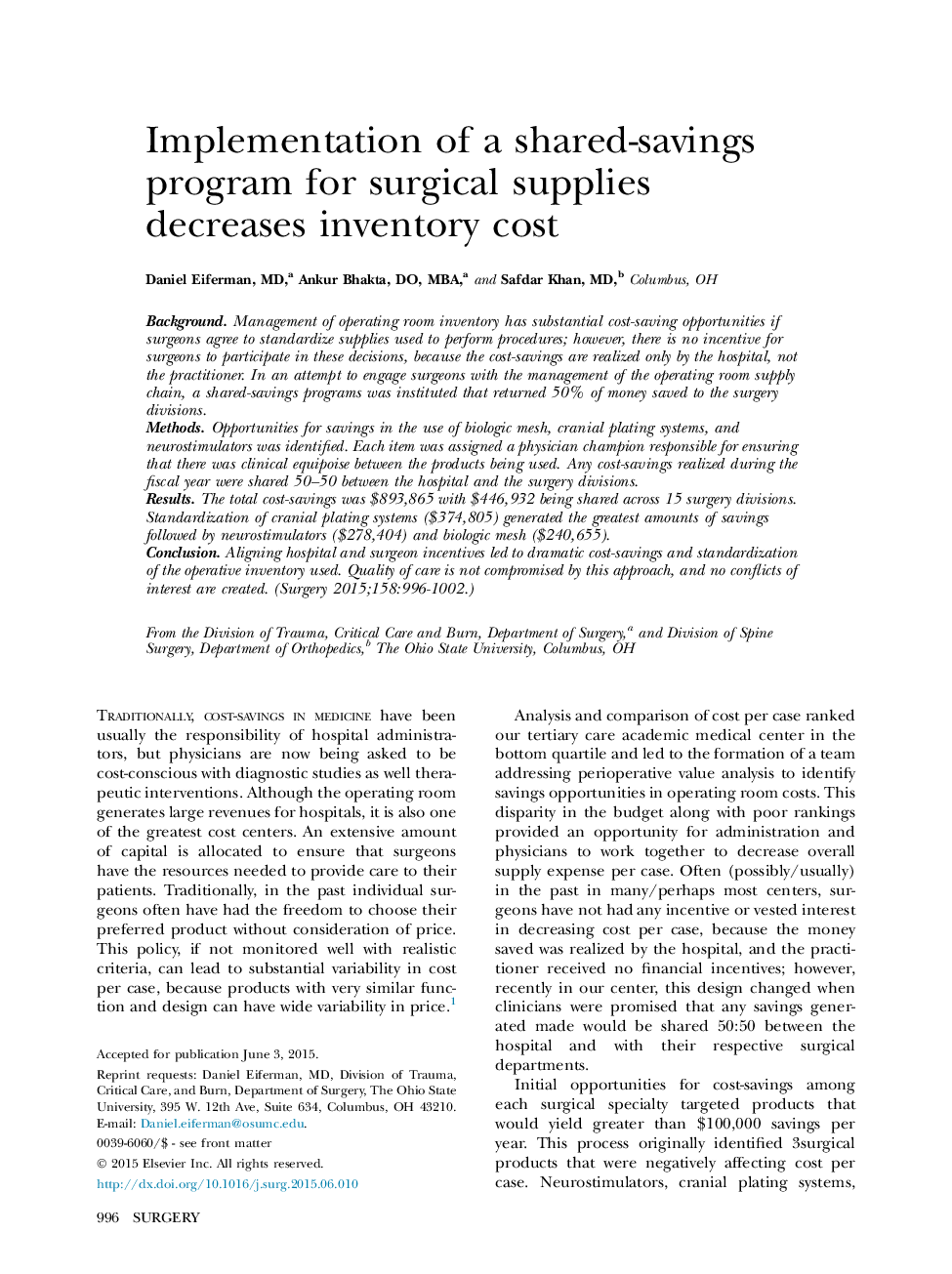| Article ID | Journal | Published Year | Pages | File Type |
|---|---|---|---|---|
| 4306955 | Surgery | 2015 | 7 Pages |
BackgroundManagement of operating room inventory has substantial cost-saving opportunities if surgeons agree to standardize supplies used to perform procedures; however, there is no incentive for surgeons to participate in these decisions, because the cost-savings are realized only by the hospital, not the practitioner. In an attempt to engage surgeons with the management of the operating room supply chain, a shared-savings programs was instituted that returned 50% of money saved to the surgery divisions.MethodsOpportunities for savings in the use of biologic mesh, cranial plating systems, and neurostimulators was identified. Each item was assigned a physician champion responsible for ensuring that there was clinical equipoise between the products being used. Any cost-savings realized during the fiscal year were shared 50–50 between the hospital and the surgery divisions.ResultsThe total cost-savings was $893,865 with $446,932 being shared across 15 surgery divisions. Standardization of cranial plating systems ($374,805) generated the greatest amounts of savings followed by neurostimulators ($278,404) and biologic mesh ($240,655).ConclusionAligning hospital and surgeon incentives led to dramatic cost-savings and standardization of the operative inventory used. Quality of care is not compromised by this approach, and no conflicts of interest are created.
